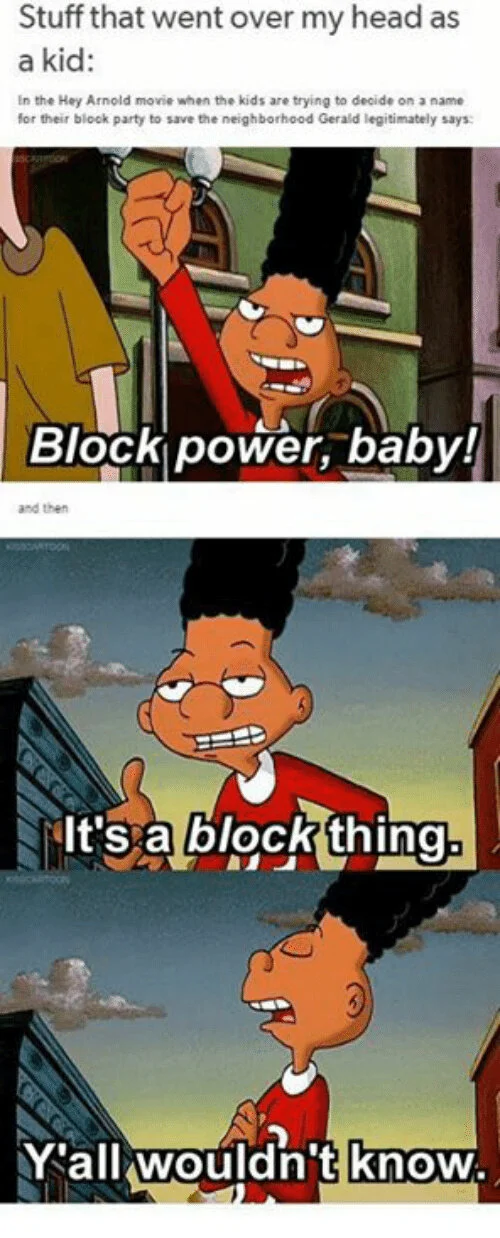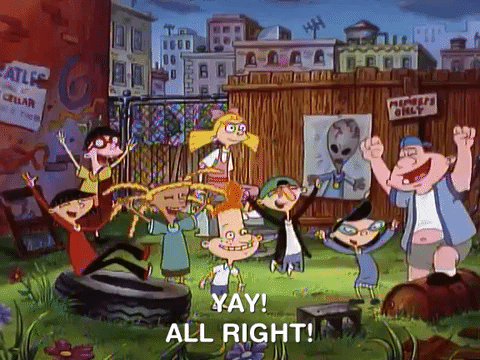‘90s Babies!: The Return of “Kids TV,” Part II
Part II: Nickelodeon
By Jessica Wise
This was originally written in 2016 for my graduate class on television studies. With the upcoming Popular Culture Round Table Talk on the way, I thought it was time to revisit. It’s been revised and taken out of the academic context for your enjoyment, and updated for present day TV.
Get your tickets to Round Table Talk: Popular Culture here.
Millennial cartoons continue their influence across every major kids’ television network. With The Splat and Nick Rewind making a return to primetime on Nickelodeon’s multiple platforms, it’s become apparent how millennial pop culture has kept its foothold in a huge portion of Nick’s programming and marketing budget. Again, this comes from content that’s empowered, both then and now, by normalizing characters with diversity, non-traditional households, and kids’ agency in their adult-dominated world. Those characters still dominate primetime and inspire us today, in reruns and reboots.
One Nickelodeon hit that follows this pattern is Hey Arnold! (1994-2004). Creator and lead writer Craig Bartlett took care to build diversity not only with the cast of fourth graders, but also with the cast of adults. Capturing the true setting of Brooklyn in the 1990’s, the cast of Hey Arnold! was an eclectic blend of races and socioeconomic backgrounds. Arnold is a blonde white child but with the oddest shaped “football head” (Bartlett). His best friend Gerald is black with parents who work in corporate America. Helga Pataki is of German descent with a father who is a small businessman and a stay-at-home (but also absent-minded and possibly depressed) mom. Stinky, from the South, has a thick drawl that separates him from his friends. Sid does not come from much money. He is so embarrassed of his situation, he cannot bear to bring his new, rich, Hispanic friend Lorenzo to see his room. So he “borrows” Arnold’s (Purdy). Harold is Jewish, Phoebe is half Asian, Rhonda is a nondescript wealthy fashionista, and Nadine defies the stereotype that black girls cannot have naturally blonde hair.
Credit: MemeDroid
Arnold’s adult boardinghouse neighbors also pose examples of diversity. Oskar and Suzie Kokoshka are the odd couple you would see today on 90 Day Fiance. She is an intense New Yorker, and he is an easy going Eastern European immigrant. Mr. Hyunh is a Vietnamese immigrant refugee of the Vietnam War. Ernie Potts, tough, short, and stout is the perpetual bachelor and demolition man. This blend of races and socioeconomic backgrounds provides multiple lenses for fans of the show to learn from. These create narratives that are not just about Arnold, but also about the struggles of the people around him due to cultural or monetary differences-- Mr. Hyunh’s separation from his daughter in the war, Sid and Lila’s money troubles, or Phoebe’s culturally-rooted pressure to perform exceedingly well in school.
The characters also live in a non-traditional environment. The very city in which they live, a depiction of Brooklyn, New York, is traditionally thought of as a place not conducive to raising children and families. Unlike a suburban carpool town, the kids in Hey Arnold! take public transportation, or they simply walk. They do not have driveways or backyards to play in, so they have their sporting events in a vacant lot or the city park. Their teacher Mr. Simmons, teaches through activities with assignments such as “Being Uniquely You” (Bartlett), encouraging them to learn in a way that suits them.
Arnold himself is raised by his grandparents, who own a lively boardinghouse, after his own parents ominously go missing in a disease-ridden country (Bartlett). Though Arnold wishes he could know the truth about his parents, especially on Parents Day when Helga’s dad calls him “some orphan boy” (Bartlett), he considers his grandparents and the other residents of their boardinghouse his family. When the house goes on a family game show “Fighting Families,” Arnold is nervous about the dysfunctional group. Gerald encourages Arnold to embrace this difference though: “So you have a non-traditional family. It’s no big deal. TV loves that kind of thing” (Lamoreaux). They start off rocky, but once they work together and are allowed to be themselves, they win as “Arnold’s family” (Lamoreaux).
By placing Arnold as the protagonist in a non-traditional home, Arnold became a more universal character and was able to teach kids that their unique situations are not wrong or a reason to be embarrassed. It is only after this is normalized, that the show returns to TV in 2017 with Hey Arnold: The Jungle Movie, and Arnold is finally reunited with his parents.
Meme Credit: Dopl3r.com
As far as agency, the kids of this show often save the day for the adults in their lives. In “Arnold’s Christmas,” Arnold and Gerald do an immigration investigator’s Christmas shopping in exchange for him finding Mr. Hyunh’s daughter, who he sent to America ahead of himself to save her from warring Vietnam. Helga secretly slips the investigator her Christmas present, a coveted pair of “Nancy Spumoni snow boots” (Bartlett), to complete his list and reunite the broken family. Ernie falls for a supermodel, and Arnold coaches him to landing the date. Arnold serves as the liaison between the Kokoshkas to save their marriage. And by working as a team, the kids are able to pull their teacher Mr. Simmons to safety in the midst of an emergency flood (Bartlett). The kids are the voices of reason, the middle-men, and the heroes.
Series concludes September 25th with Part III: Disney. Stay tuned!
References:
Bartlett, Craig. "Arnold's Christmas." Hey Arnold! Nickelodeon. 11 Dec. 1996. Television.
Lamoreaux, Michelle. "Fighting Families." Hey Arnold! Nickelodeon. 23 Oct. 1999. Television.
Purdy, Joseph. "Arnold's Room." Hey Arnold! Nickelodeon. 9 Sept. 1998. Television.








